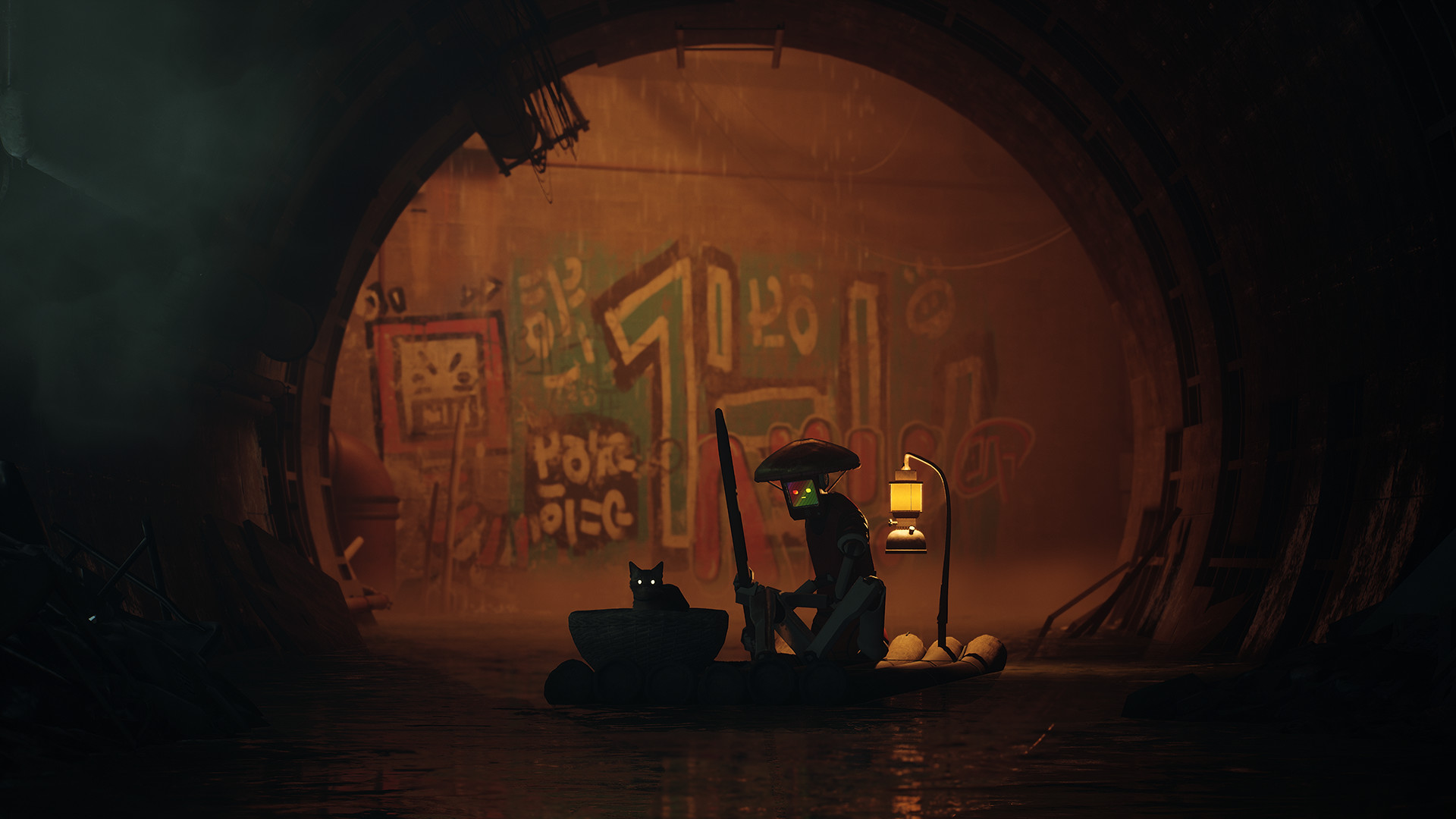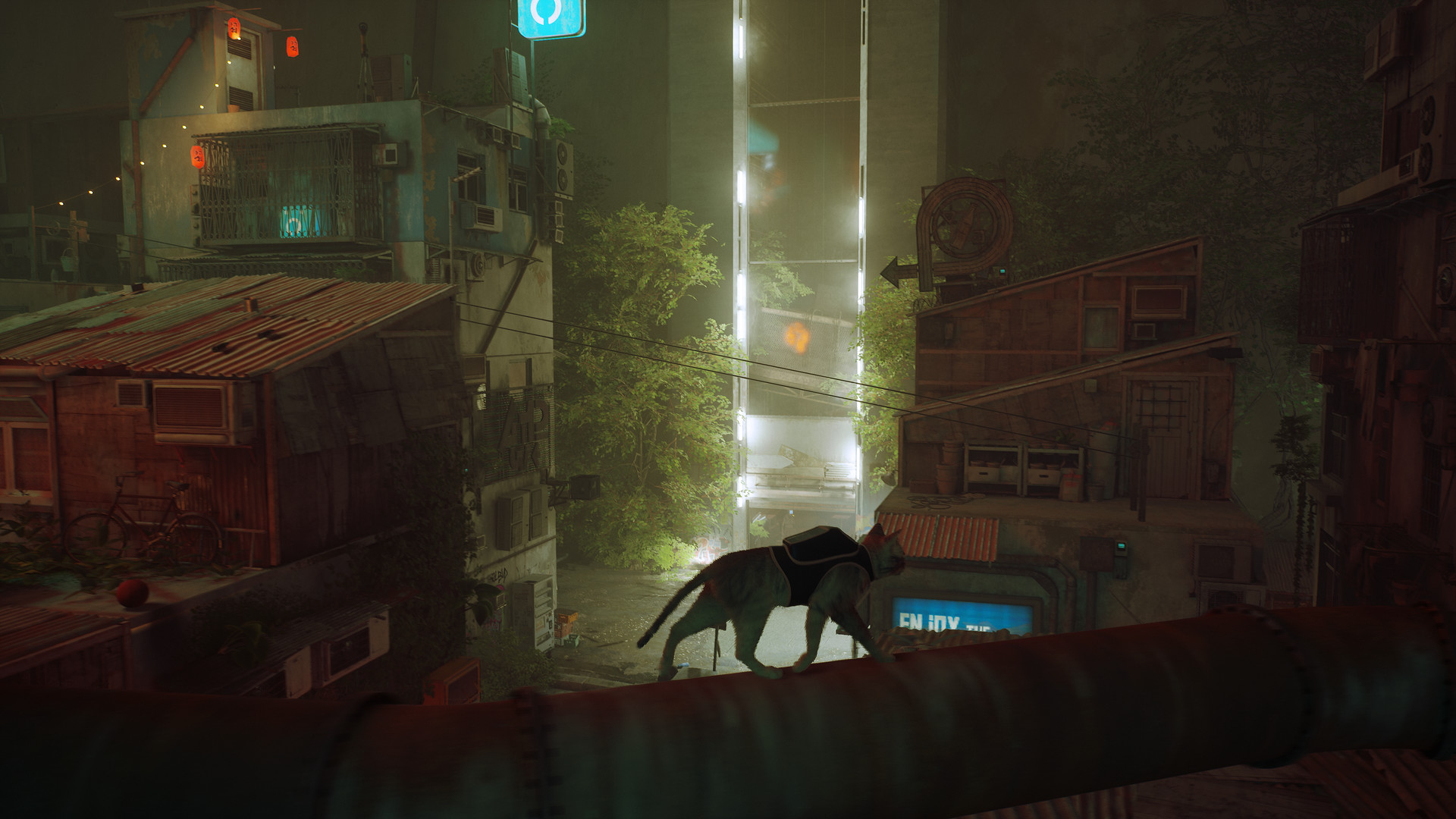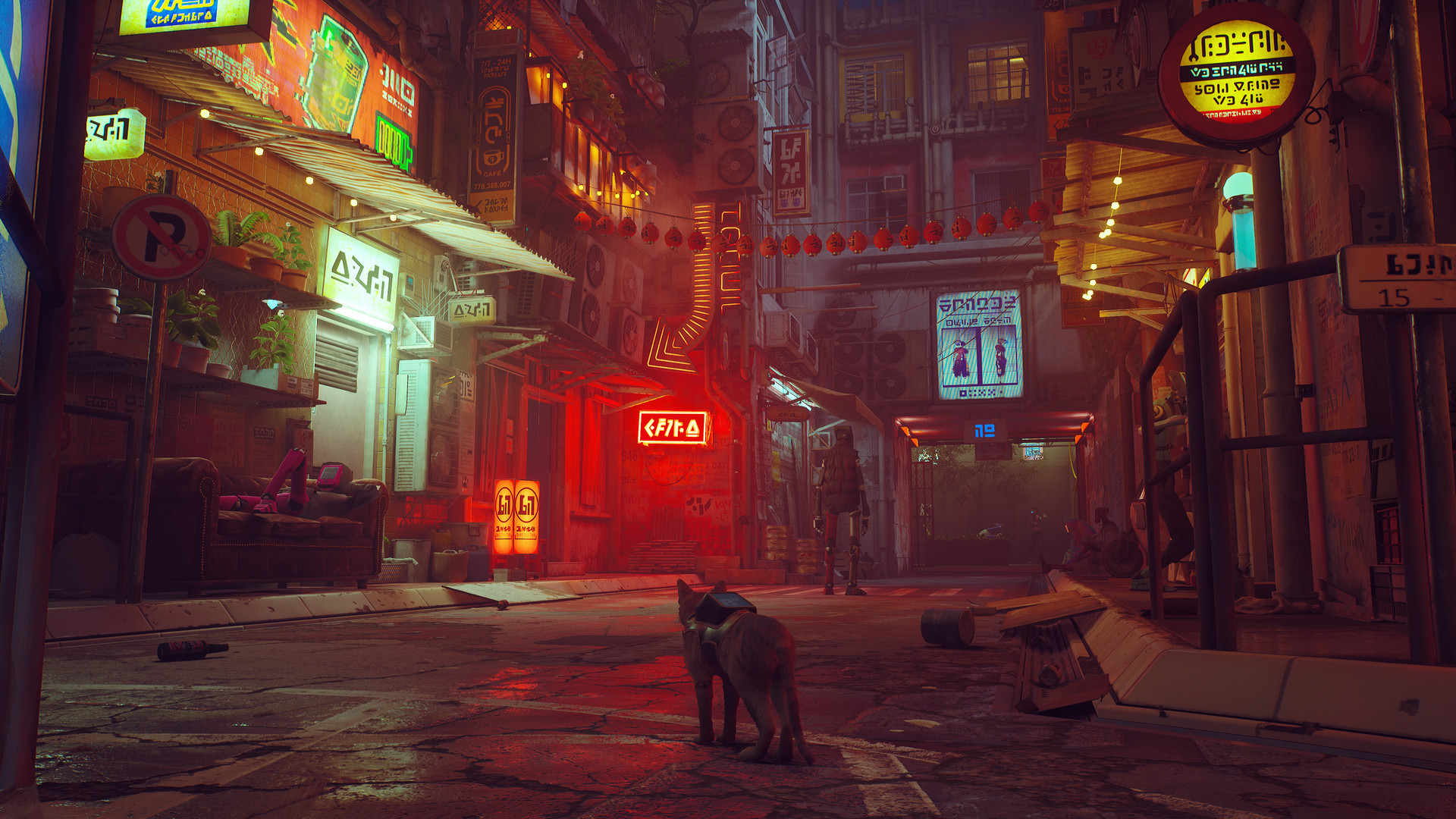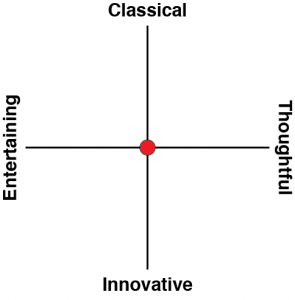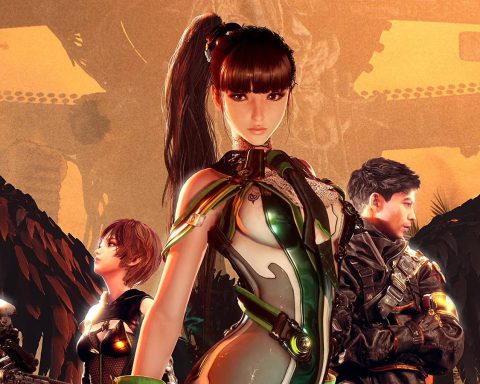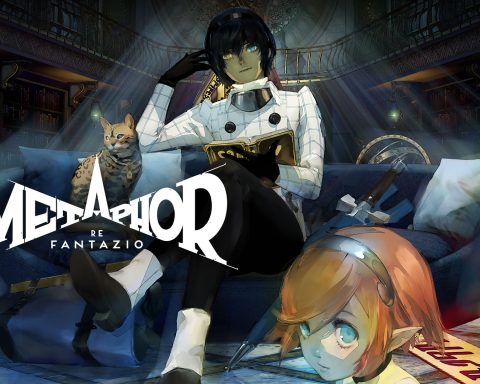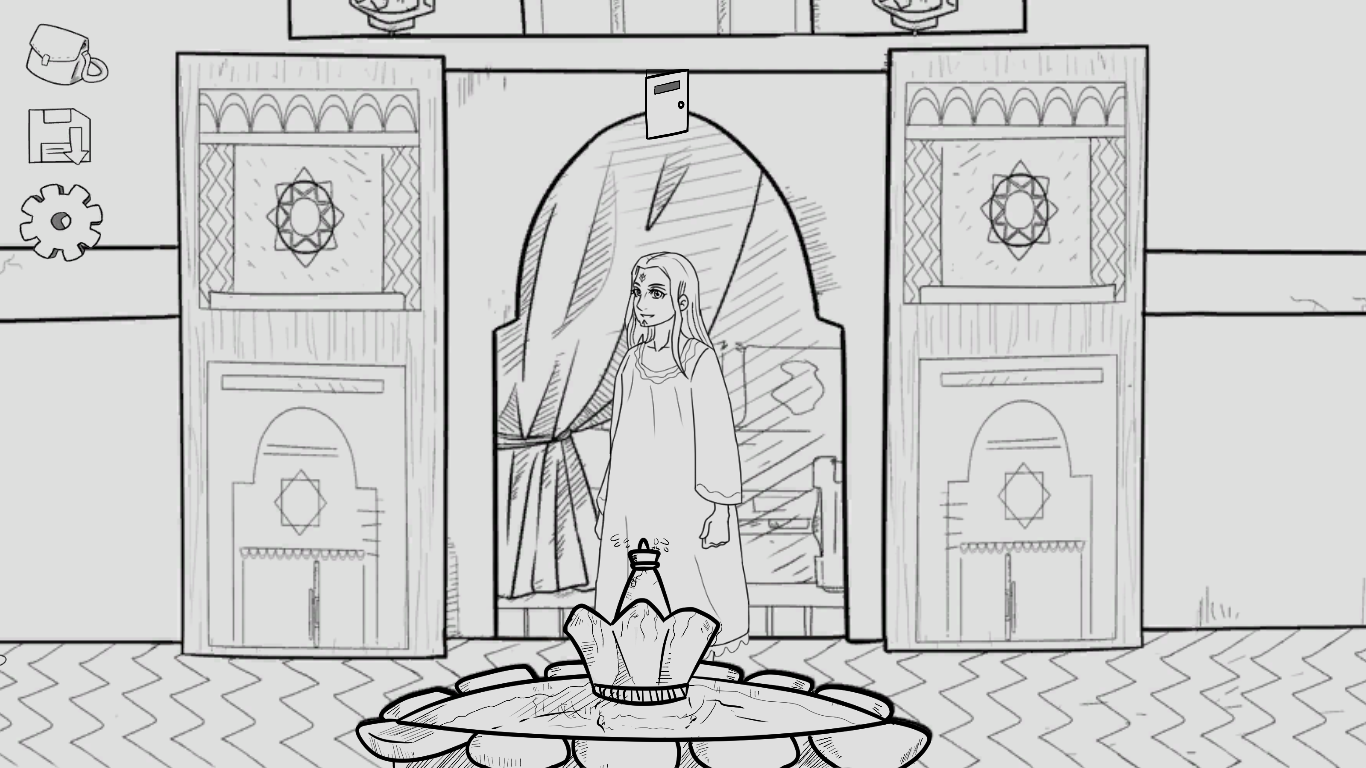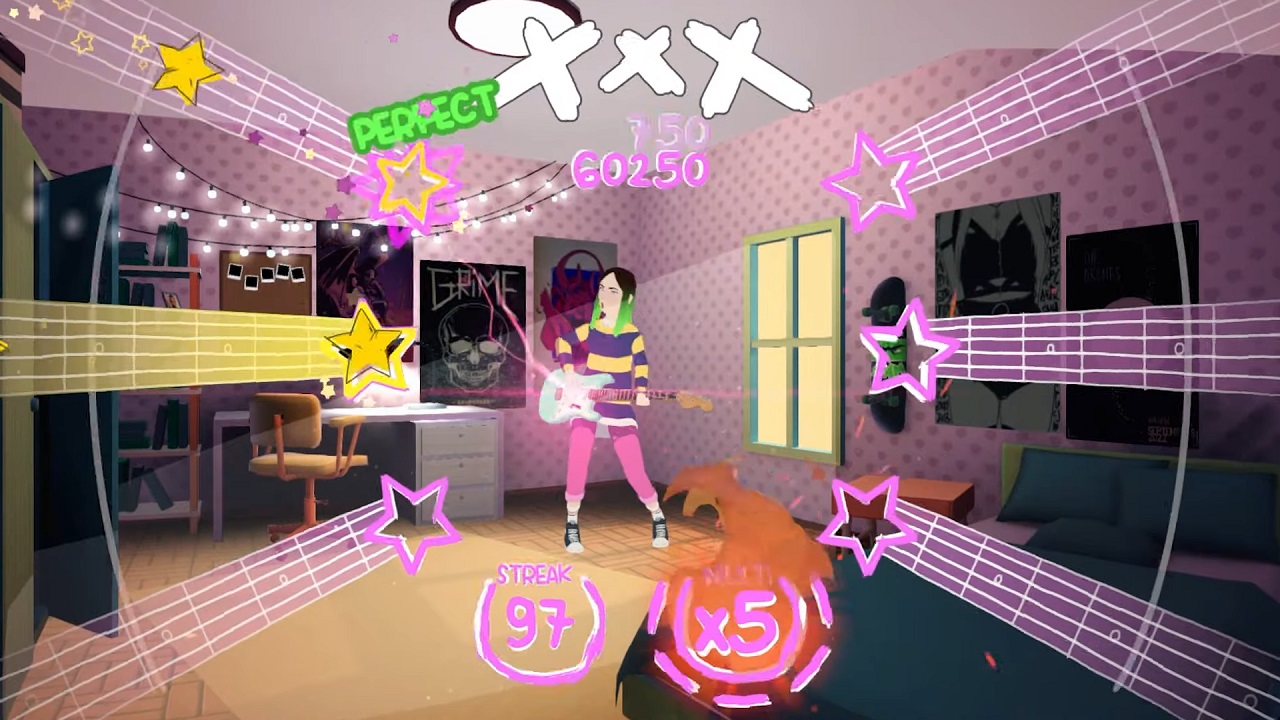For the entire prelaunch hype cycle behing Stray, if you mentioned “the cat game”, people knew exactly what game you were talking about. It seemed like the perfect mix of cute & cuddly, since it was about a furrball, and a contrasting cyberpunk dystopian aesthetic, complete with funky (and also plenty sinister) robots. That combination was enough to get just about everyone on board with keeping an eye on it. Thankfully it has also delivered.
Everything about Stray is a matter of “oh look at that cute cat”, and the developers must have spent an obscene amount of time studying cat videos on YouTube because if you have seen a cat do something then it is most likely a feature in this game. From brushing up against legs and purring loudly to something as silly as walking on a keyboard, it’s all there and it’s all very cat. The game is essentially a cat simulator in many ways. While I found this to be a main attraction of the experience, the rest of the it is by no means inferior and it absorbs the player into a meticulous and interesting world indeed.
To summarise, Stray explores a decaying cyber city (based on the infamous real-world Kowloon), and sets the titular cat protagonist the goal of escaping long abandoned parts of the city and finding a way to the outside. After losing track of the rest of its gang of cats, our now-lonely her ends up finding a small robot called B-12, which introduces an adorable dynamic, as the robot gives a lively narration to the world, and translates the world around them into cat form.
So, as much as the game is taken from the cat’s perspective, the strongest storytelling aspect of Stray is the world that has been crafted around the feline. The city itself is a multilevel pit inside an enclosed space that has become so shut off that residents tell stories of a “outside” as though it were mythological, not unlike the concept of heaven. With the intensely stacked together buildings and intricate passageways, it’s a decaying, decrepit and fascinating maze, and the setting backs up the depiction of the robotic society that has replaced humanity. Make no bones about it, this game leans heavily into the dystopia of cyberpunk, and it’s hard to shake the ominous feeling that builds throughout the adventure.
But it’s also not a miserable adventure. As the cat transverses through the colonies, the robot residents experience a wave of hope that pushes these creatures to believe again in something bigger than themselves. To see the potential of an escape or a new beginning. I liken Stray to the Pixar film, Wall-e, in some ways. And just like in Wall-e, the best qualities of humanity are presented by an innocent, in the form of the cat, who might seem meek and small, but its heroics affect the inhabitants that it comes into contact with, and leaves the game with a fundamentally hopeful promise. Much like Wall-e, there’s the sense that the artists are arguing that as diminished as humanity has become, it is not without an indomitable spark of good.
While the humanoid robots aren’t deeply engaged in pondering their existence like games like something out of NieR, there are nonetheless references to works such as Asimov’s Law of Robotics scattered throughout and, frankly, given the premise this would never have come as a surprise. Additionally, memories are scattered through the game both as main obtainable pieces of information and optional side quests. These memories are of the robot B-12 and explain its existence, and are informative in explaining how the robotic humanoids treat themselves and the ambitions of the city in better years. So Stray is smart, too. Armchair philosophers will have fun piecing bits and pieces together in relation to everything from existentialism to moral philosophy.
The game is primarily narrative-driven with the main moments of interactivity being puzzles in the humanoid settlement sections and bursts of action once you’re exploring the abandoned areas of the city. The action sequences typically involve either stealth, or finding ways to escape from a pursuing enemy. They’re functional, but the focus always seems to be driving players back to the game’s strength, which is the storytelling and characterisation of the cat.
Anyone expecting Stray to be an action-packed stealth game – as the promotional material tried to argue it is – might be disappointed as the game is more about the journey and the narrative than it is about skulking. What Stray does well is expressing a journey featuring a less-than-common protagonist, and while other games have covered similar themes it’s that unique perspective, from much closer to ground level, and the visual stimulating scenes that makes it ground well worth padding over again.
